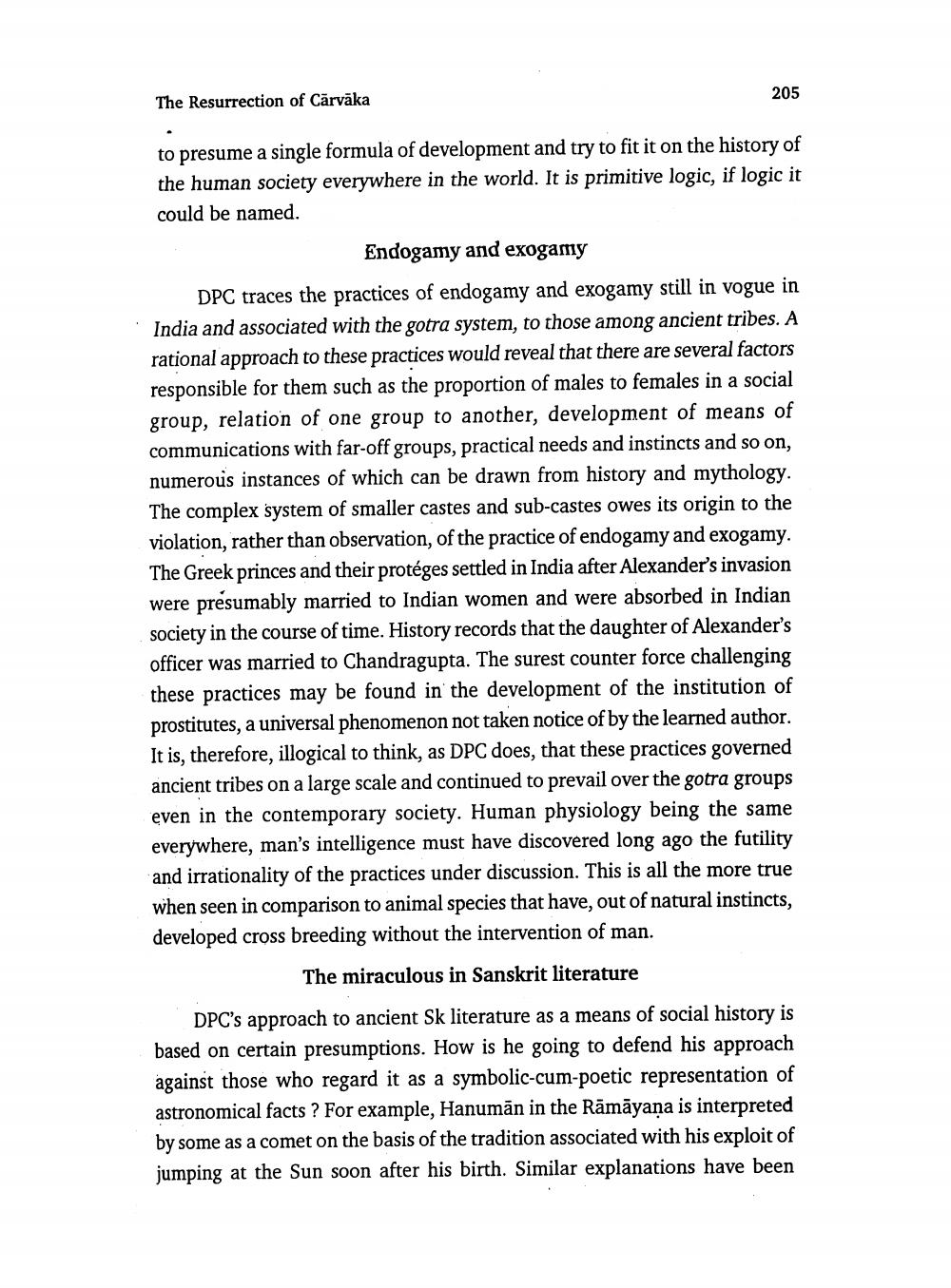________________
The Resurrection of Cārvāka
205
to presume a single formula of development and try to fit it on the history of the human society everywhere in the world. It is primitive logic, if logic it could be named.
Endogamy and exogamy
DPC traces the practices of endogamy and exogamy still in vogue in India and associated with the gotra system, to those among ancient tribes. A rational approach to these practices would reveal that there are several factors responsible for them such as the proportion of males to females in a social group, relation of one group to another, development of means of communications with far-off groups, practical needs and instincts and so on, numerous instances of which can be drawn from history and mythology. The complex system of smaller castes and sub-castes owes its origin to the violation, rather than observation, of the practice of endogamy and exogamy. The Greek princes and their protéges settled in India after Alexander's invasion were presumably married to Indian women and were absorbed in Indian society in the course of time. History records that the daughter of Alexander's officer was married to Chandragupta. The surest counter force challenging these practices may be found in the development of the institution of prostitutes, a universal phenomenon not taken notice of by the learned author. It is, therefore, illogical to think, as DPC does, that these practices governed ancient tribes on a large scale and continued to prevail over the gotra groups even in the contemporary society. Human physiology being the same everywhere, man's intelligence must have discovered long ago the futility and irrationality of the practices under discussion. This is all the more true when seen in comparison to animal species that have, out of natural instincts, developed cross breeding without the intervention of man.
The miraculous in Sanskrit literature
DPC's approach to ancient Sk literature as a means of social history is based on certain presumptions. How is he going to defend his approach against those who regard it as a symbolic-cum-poetic representation of astronomical facts ? For example, Hanuman in the Rāmāyaṇa is interpreted by some as a comet on the basis of the tradition associated with his exploit of jumping at the Sun soon after his birth. Similar explanations have been




